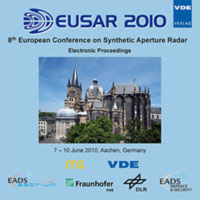Accuracy Assessment of Polarimetric SAR Land Cover Classification for Boreal Regions with Moderate Topography
Conference: EUSAR 2010 - 8th European Conference on Synthetic Aperture Radar
06/07/2010 - 06/10/2010 at Aachen, Germany
Proceedings: EUSAR 2010
Pages: 4Language: englishTyp: PDF
Personal VDE Members are entitled to a 10% discount on this title
Authors:
Ripka, B. (IHE, Karlsruhe Institute of Technology, Karlsruhe, Germany)
Atwood, D. K. (Geophysical Institute, University of Alaska Fairbanks, Alaska, USA)
Abstract:
The recent availability of dual- and quad-pol SAR imagery now permits serious investigation into using polarimetry for land cover classification. The advantage of this approach is the ability to understand the scattering mechanisms of the target. However, the unique geometry of SAR also presents challenges in the form of variable radiometry and geometric distortions based on the local topography. In this investigation, we utilize the quad-pol imagery of ALOS PALSAR to investigate techniques for classifying land cover in interior Alaska. The region is characterized by low intensity urban development and a boreal environment consisting of black spruce, birch, herbaceous cover, and wetlands. Much of the interior is characterized by rolling hills that present challenges via a highly variable radar backscatter. In response, two techniques are investigated: span normalization and normalization with radiometry derived from a Digital Elevation Model (DEM). A modified form of an unsupervised Wishart classifier is used to investigate the impact of these topographic normalizations. The land classes are compared with the National Land Cover Database 2001 in order to assess classification accuracy for each of the classification techniques. User and producer accuracies are analyzed in order to identify the optimal classification technique for boreal environments.


